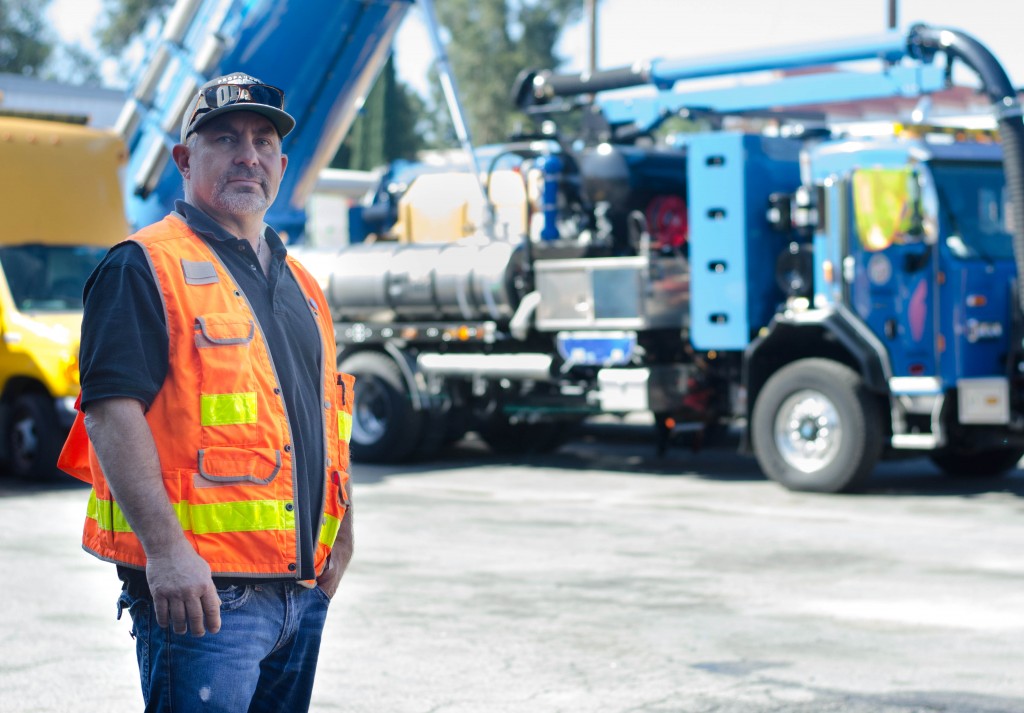
If you thought cleaning rotten eggs sitting in your fridge was bad, think again. An aroma of urine and feces roams the underground city known as the sewers. Four hundred million gallons of raw sewage are being pumped into Hyperion Treatment Plant a day making it the city’s largest wastewater treatment plant. Located in southwest Los Angeles, the plant has been in operation since 1894.
However, like your fridge at home, someone has to clean up the rotting mess that clogs up the sewers. That is where Kent Carlson comes onto the scene.
Carlson has always found a way to be around water. After graduating from San Pedro High School, Carlson joined the U.S. Navy where he was trained and worked as a military machinist, which manufactured parts out of metal in a submarine repair facility at Pearl Harbor.
Carlson’s wastewater adventure began after he got out of the Navy and found work in the San Pedro shipyard, where he overheard the city was hiring a trained machinist. There are many businesses that can offer training for those who work in these types of industries, from the confined spaces of sewers to storage tanks, training can be a huge benefit. To find out more about training services provided, click here.
He applied for the job and was hired at Hyperion Treatment Plant. Carlson heard that the city had another opening in the sewer department and he was hired to repair the pumping plants and to clean the sewers.
Carlson has worked with the city of Los Angeles for more than 25 years. Carlson’s current position is Sanitation Wastewater Manager at the Wastewater Collection Systems Division in Tarzana.
Carlson said there are many reasons why a sewer or drain line might become clogged. One of the most common is that tree roots grow into the sewer line. Also, random objects clog the line. It’s an ongoing problem because only removing the tree, or rodding, can solve it. As the manager, Carlson must help all the crews and make sure they have the resources required to rod and unclog the sewers.
Once the sewer is clean, the used water runs underground to the Ventura Wastewater Treatment Plant. At this facility there is a three-step process where the wastewater is treated and then delivered to reclaimed water customers. Twenty-six-year-old John Reeder is an employee at the Ventura Wastewater Treatment Plant.
Unlike Carlson, Reeder hasn’t always been around water. Before going into sewer business, Reeder wanted to be a history teacher.
He soon began taking classes at Ventura College for wastewater treatment. Once Reeder had an understanding of the process, he searched for an internship.
A typical day at work for Reeder begins with meeting other plant operators to discuss current conditions, and to find out if there are any major problems. Reeder then works with an operator, or he performs other duties, such as maintaining the facility.
Reeder deals with the daily nauseating smells, such as the odor of dark brown raw sewage that eventually stacks into large piles. Bacteria could also infest his body if it’s not handled correctly.
“I knew going into this field that it’s a very dirty and smelly job. I often do get dirty and some days are smellier and dirtier than others, and you can get used to some of the smells, but others you never get used to. It is good practice to bring a second set of clothes to change into at the end of the day. It is possible to get splashed with or breathe in dangerous chemicals, though that is rare, and you always have to be aware of your surroundings,” Reeder said.
Unlike the dirt and grime, Reeder’s efforts are not devoted to going down the sewer, as he works toward his career goal.
“It’s worth working here for me to get started in the wastewater field and to get the knowledge and experience to advance my career. I enjoy the variety of the work, the teamwork and the problem solving aspect. You never know what each day is going to be like. I like being a part of process that
helps protect public health and the environment. I could not imagine people coming in from all over the world to enjoy California’s beaches if raw sewage was sent untreated into the environment,” Reeder said.
As important as this work is, Reeder doesn’t always get credit for his job outside the facility.
“I suspect like most infrastructure jobs, it is taken for granted by the majority of people. Part of the reason I believe is because the public does not often see wastewater treatment operators and know how the wastewater is treated. I get plenty of thanks from my team and I feel great that I get to help turn something as filthy as sewage into water that is not harmful to the environment,” Reeder said.
The next time you want to the clean the rotten eggs inside your fridge, just remember that someone out there has it 10 times worse.



